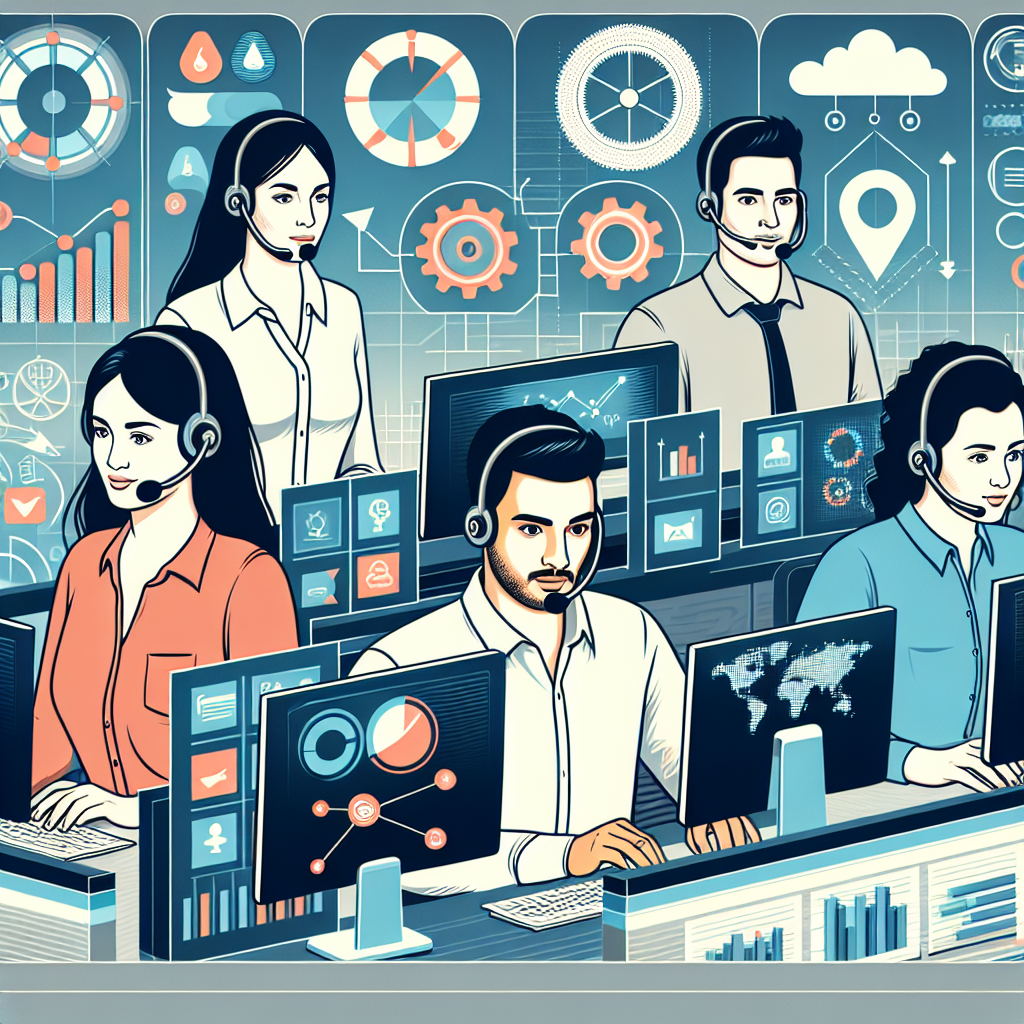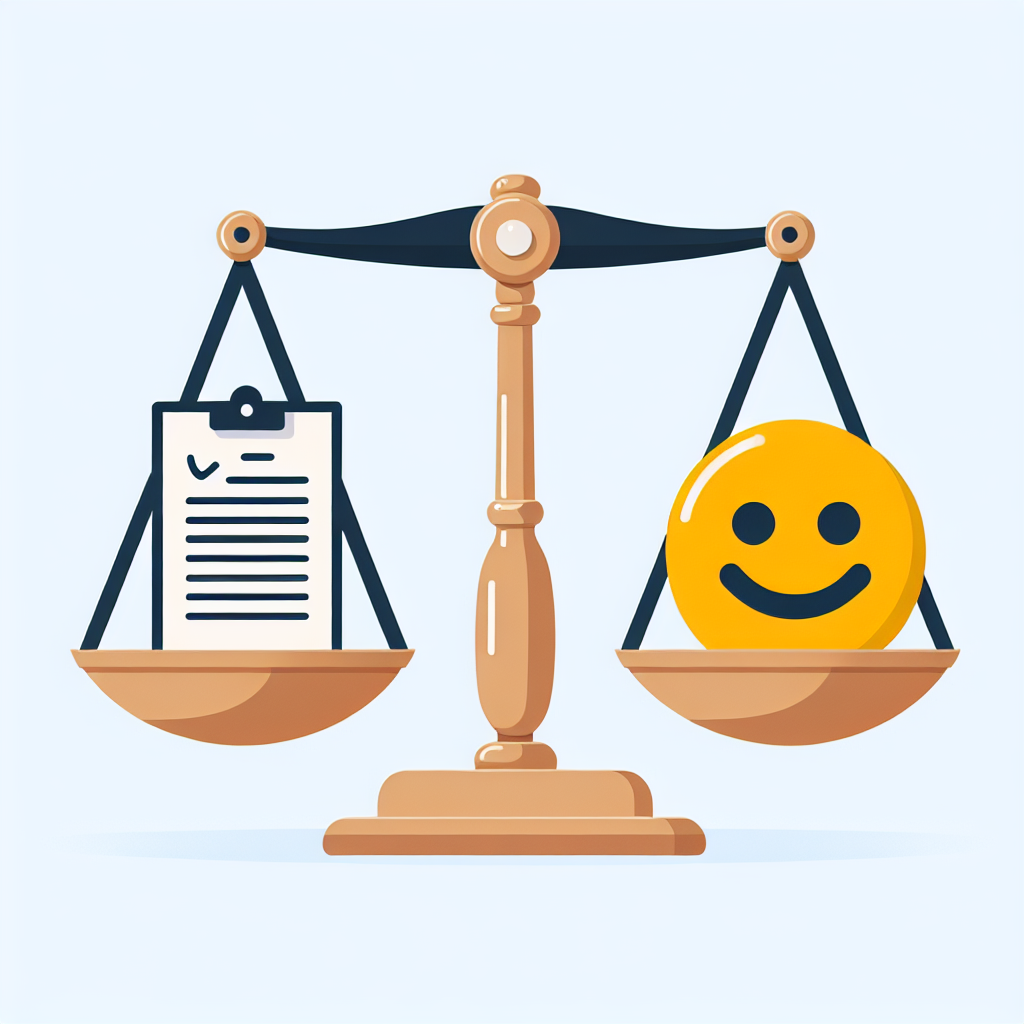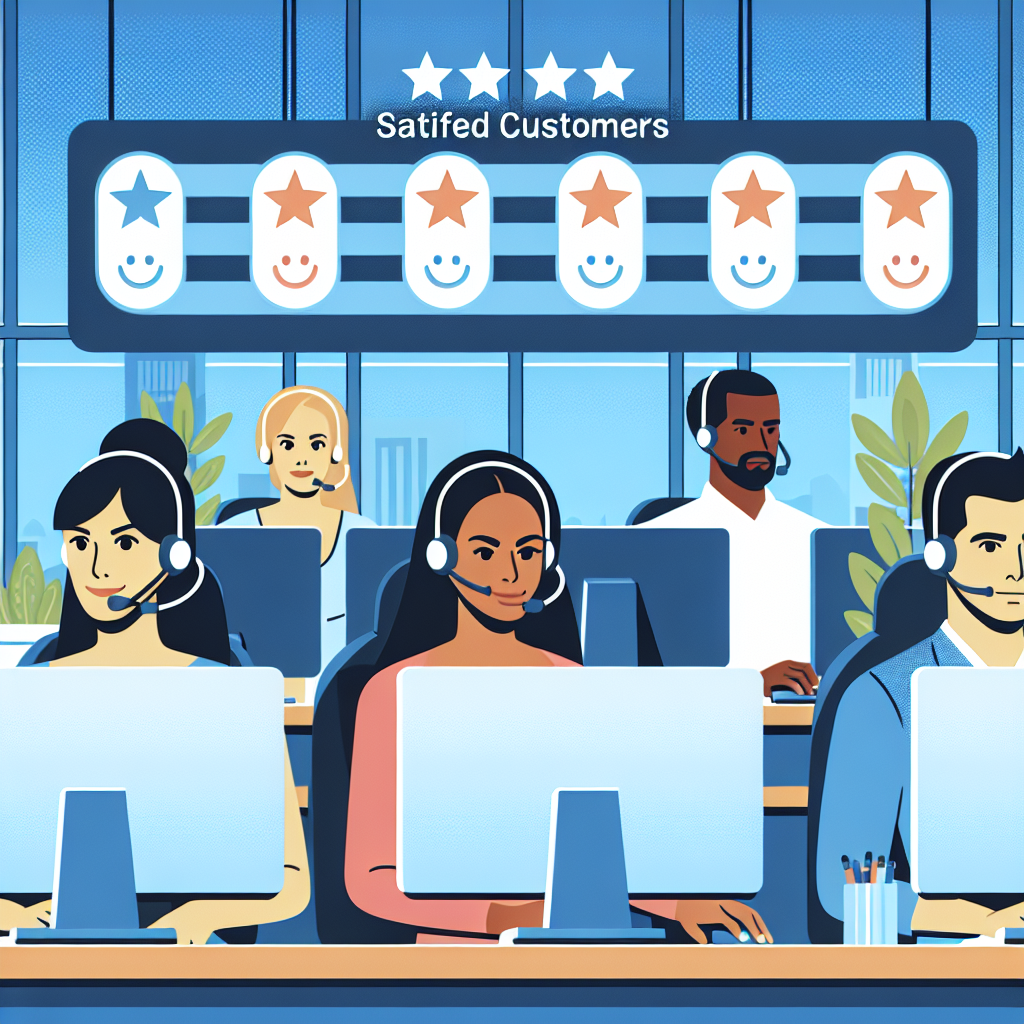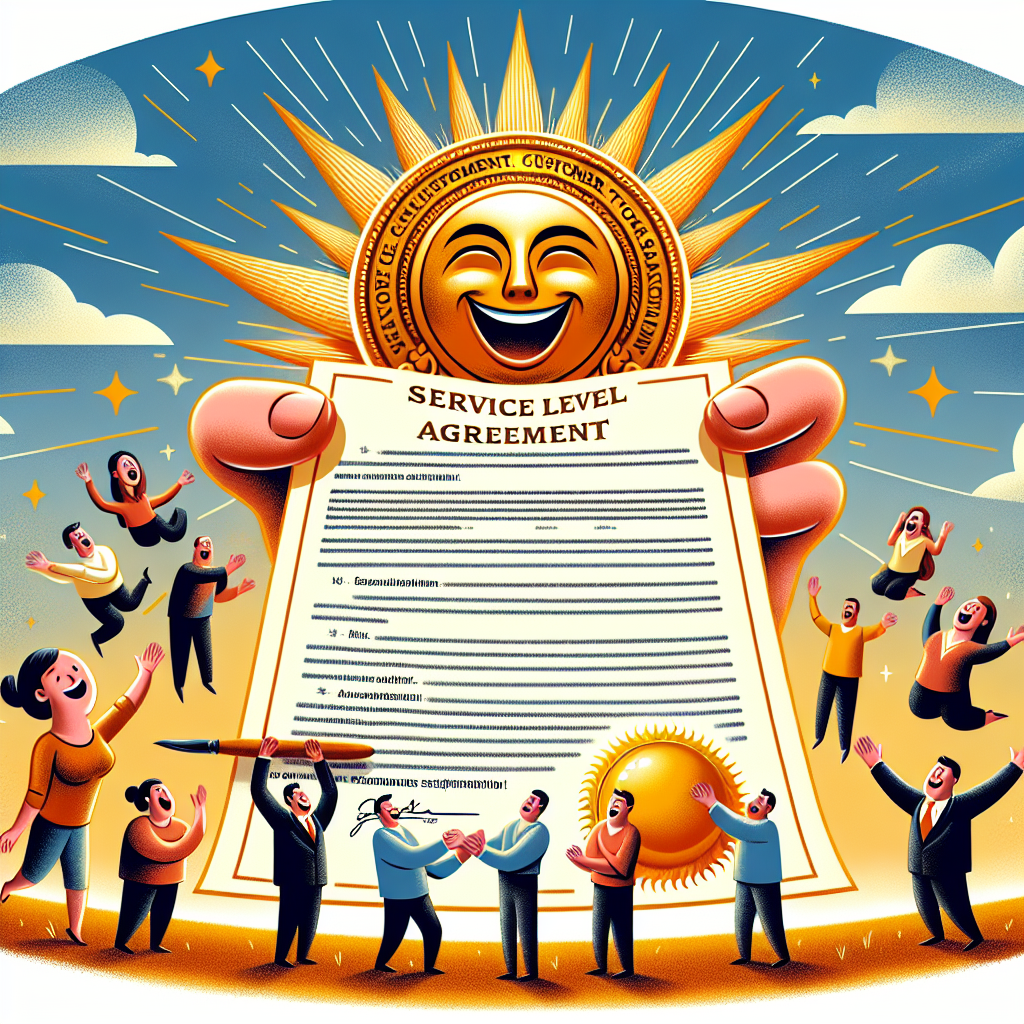Your cart is currently empty!
Tag: Customer

Top Tips for Providing Excellent Customer Service in Technical Support
When it comes to technical support, providing excellent customer service is crucial. Customers rely on technical support teams to help them troubleshoot issues with their devices and software, and it’s important to provide a positive and efficient experience for them. Here are some top tips for providing excellent customer service in technical support:1. Listen actively: One of the most important aspects of providing excellent customer service is listening to the customer’s problem and understanding their needs. Make sure to give the customer your full attention and ask clarifying questions to ensure you fully understand the issue they are facing.
2. Be patient and empathetic: Dealing with technical issues can be frustrating for customers, so it’s important to be patient and empathetic. Show understanding and compassion towards the customer’s situation, and work with them to find a solution that meets their needs.
3. Communicate clearly: Technical support can be complex, so it’s important to communicate clearly and in a way that is easy for the customer to understand. Avoid using technical jargon and explain solutions in a simple and concise manner.
4. Provide timely responses: Customers value quick responses when they are experiencing technical issues, so make sure to respond to their inquiries in a timely manner. Set realistic expectations for response times and make sure to follow up with the customer if you need more time to find a solution.
5. Follow up: After resolving the customer’s issue, follow up with them to ensure that the solution is working effectively. This shows that you care about the customer’s experience and are committed to providing excellent service.
6. Offer proactive support: Anticipate potential issues that customers may face and provide proactive support to help them avoid problems. This could include sending out updates or providing tips and tricks for using the product more effectively.
7. Stay up to date: Technology is constantly evolving, so it’s important to stay up to date on the latest trends and developments in the industry. This will help you provide more informed and effective support to customers.
By following these top tips for providing excellent customer service in technical support, you can help ensure that your customers have a positive experience and feel supported in resolving their technical issues. Remember, happy customers are more likely to become repeat customers and advocates for your brand.

Top Help Desk Software Solutions for Streamlined Customer Support
In today’s fast-paced business environment, providing exceptional customer support is crucial for maintaining customer satisfaction and loyalty. One of the key tools that businesses can use to streamline their customer support processes is help desk software. Help desk software enables businesses to efficiently manage customer inquiries, track issues, and provide timely resolutions.Here are some of the top help desk software solutions that businesses can consider to streamline their customer support:
1. Zendesk: Zendesk is a popular help desk software solution that offers a comprehensive set of features for managing customer inquiries and support tickets. It includes features such as ticket management, live chat support, knowledge base, and reporting tools. Zendesk is known for its user-friendly interface and customizable workflows, making it a great choice for businesses of all sizes.
2. Freshdesk: Freshdesk is another top help desk software solution that offers a range of features for managing customer support. It includes features such as ticket management, automated workflows, multi-channel support, and reporting tools. Freshdesk is known for its ease of use and quick setup, making it a popular choice for small and medium-sized businesses.
3. Salesforce Service Cloud: Salesforce Service Cloud is a comprehensive customer service platform that includes help desk functionality. It offers features such as case management, knowledge base, live chat support, and social media integration. Salesforce Service Cloud is known for its scalability and integration capabilities, making it a great choice for large enterprises.
4. Jira Service Desk: Jira Service Desk is a help desk software solution designed for IT teams that need to manage customer support for their organization. It offers features such as ticket management, automation rules, SLA management, and reporting tools. Jira Service Desk is known for its integration with other Atlassian products, making it a great choice for organizations that already use Atlassian tools.
5. Zoho Desk: Zoho Desk is a help desk software solution that offers a range of features for managing customer support. It includes features such as ticket management, knowledge base, live chat support, and reporting tools. Zoho Desk is known for its affordability and ease of use, making it a popular choice for small businesses.
In conclusion, help desk software solutions play a crucial role in streamlining customer support processes and improving customer satisfaction. Businesses can choose from a range of top help desk software solutions based on their specific needs and budget. By investing in the right help desk software, businesses can provide efficient and effective customer support, leading to increased customer loyalty and retention.

The Role of Service Level Agreements (SLAs) in Ensuring Customer Satisfaction
Service Level Agreements (SLAs) play a crucial role in ensuring customer satisfaction in today’s competitive business environment. An SLA is a contractual agreement between a service provider and a customer that outlines the level of service that the provider will deliver. These agreements are essential in establishing clear expectations and performance metrics for both parties, ultimately leading to improved customer satisfaction.One of the key benefits of SLAs is that they provide a clear understanding of the services that will be provided and the responsibilities of both the service provider and the customer. By clearly defining the scope of services, response times, and performance metrics, SLAs help to eliminate misunderstandings and ensure that both parties are on the same page. This transparency fosters trust and accountability, which are essential for building strong, long-lasting relationships with customers.
SLAs also help to set performance standards and hold service providers accountable for meeting those standards. By specifying key performance indicators (KPIs) such as response times, uptime, and resolution times, SLAs provide a benchmark for measuring the quality of service. This not only helps to identify areas for improvement but also ensures that customers receive the level of service they expect and deserve.
In addition, SLAs help to prioritize service delivery based on the needs and preferences of the customer. By outlining service levels for different types of issues or requests, SLAs ensure that critical issues are addressed promptly and efficiently, while less urgent issues are handled in a timely manner. This helps to streamline the service delivery process and ensure that customers receive the level of service that they require.
Furthermore, SLAs can also help to improve communication between service providers and customers. By establishing clear channels of communication and escalation procedures, SLAs ensure that issues are addressed promptly and effectively. This not only helps to resolve problems quickly but also demonstrates to customers that their concerns are being taken seriously.
Overall, the role of SLAs in ensuring customer satisfaction cannot be overstated. By establishing clear expectations, setting performance standards, prioritizing service delivery, and improving communication, SLAs help to build trust, accountability, and strong relationships with customers. In today’s competitive business environment, having strong SLAs in place is essential for delivering high-quality service and ultimately driving customer satisfaction.

The Future of Help Desk Automation: How AI is Transforming Customer Support
In the ever-evolving world of technology, help desk automation has become a popular trend in customer support. With the increasing demand for faster and more efficient customer service, companies are turning to artificial intelligence (AI) to streamline their help desk processes.AI-powered help desk automation is revolutionizing the way companies handle customer support. By using machine learning algorithms and natural language processing, AI is able to quickly and accurately respond to customer inquiries, troubleshoot problems, and provide personalized solutions.
One of the key benefits of AI-powered help desk automation is its ability to handle a large volume of customer inquiries simultaneously. With AI, companies can provide 24/7 support without the need for human intervention. This not only improves customer satisfaction but also reduces the workload for customer support teams.
Furthermore, AI is able to learn from each interaction and improve its responses over time. This means that as more customers interact with the AI-powered help desk, it becomes more efficient and effective at solving problems. This continuous learning process ensures that customers receive the best possible support every time.
In addition to providing faster and more accurate responses, AI-powered help desk automation can also help companies identify trends and patterns in customer inquiries. By analyzing data from customer interactions, companies can gain valuable insights into customer behavior, preferences, and pain points. This information can then be used to improve products and services, enhance the customer experience, and drive business growth.
While AI-powered help desk automation offers many benefits, it is important for companies to strike a balance between automation and human interaction. While AI can handle routine inquiries and tasks, there are situations where human intervention is necessary. Companies should ensure that customers have the option to speak with a live agent when needed, and that the AI-powered help desk seamlessly transitions between automation and human support.
Overall, the future of help desk automation looks bright as AI continues to transform customer support. By leveraging the power of AI, companies can provide faster, more efficient, and more personalized support to their customers, ultimately enhancing the overall customer experience. As technology continues to advance, it is clear that AI-powered help desk automation will play a crucial role in shaping the future of customer support.

How to Improve Customer Satisfaction with an Effective Help Desk Strategy
Customer satisfaction is crucial for the success of any business. A happy customer is more likely to become a loyal customer and advocate for your brand. One of the key ways to improve customer satisfaction is by having an effective help desk strategy in place.Here are some tips on how to improve customer satisfaction with an effective help desk strategy:
1. Provide timely and personalized responses: Customers expect quick and personalized responses when they reach out for help. Make sure your help desk team is trained to respond to customer inquiries promptly and in a personalized manner. This can help build trust and improve customer satisfaction.
2. Use the right technology: Investing in the right help desk software can make a big difference in improving customer satisfaction. Choose a platform that allows you to easily track and manage customer inquiries, automate responses, and provide self-service options. This can help streamline your support process and make it more efficient for both your team and your customers.
3. Empower your help desk team: Your help desk team is on the front lines of customer support, so it’s important to empower them with the tools and resources they need to do their job effectively. Provide ongoing training and support, encourage collaboration and communication, and recognize and reward their hard work. A happy and motivated help desk team can have a big impact on customer satisfaction.
4. Gather feedback and make improvements: To ensure your help desk strategy is effective, it’s important to gather feedback from customers and use that information to make improvements. Encourage customers to provide feedback after each interaction, and use that feedback to identify areas for improvement. Making continuous improvements to your help desk strategy can help you better meet the needs and expectations of your customers.
5. Monitor performance metrics: Monitoring key performance metrics can help you track the effectiveness of your help desk strategy and identify areas for improvement. Keep an eye on metrics such as response time, resolution time, customer satisfaction scores, and ticket volume. Use this data to identify trends, make adjustments to your strategy, and ensure you’re providing the best possible support to your customers.
In conclusion, having an effective help desk strategy is essential for improving customer satisfaction. By providing timely and personalized responses, using the right technology, empowering your help desk team, gathering feedback, and monitoring performance metrics, you can create a positive and efficient support experience for your customers. Ultimately, a satisfied customer is more likely to become a loyal customer and advocate for your brand.

Improving Customer Satisfaction through Effective Technical Support
Customer satisfaction is a crucial aspect of any business. Happy customers are more likely to become repeat customers and recommend your products or services to others. One way to improve customer satisfaction is through effective technical support.Technical support plays a vital role in ensuring that customers have a positive experience with your product or service. When customers encounter issues or have questions, they expect prompt and helpful assistance from your support team. Here are some tips on how to improve customer satisfaction through effective technical support:
1. Provide timely responses: Customers want their issues to be resolved quickly. Make sure your support team responds to inquiries promptly and sets realistic expectations for resolution times. Implementing a ticketing system can help track and prioritize customer requests efficiently.
2. Empower your support team: Equip your support team with the knowledge and tools they need to effectively address customer issues. Provide training on your products or services and encourage continuous learning to stay up-to-date on new technologies and solutions.
3. Offer multiple support channels: Customers have different preferences when it comes to seeking help. Offer a variety of support channels such as phone, email, live chat, and self-service options like FAQs or knowledge bases. This allows customers to choose the most convenient method for them.
4. Personalize the support experience: Treat each customer as an individual and personalize your interactions with them. Use their name, reference past interactions, and tailor your responses to their specific needs. This shows customers that you value their business and care about their satisfaction.
5. Gather feedback and act on it: Encourage customers to provide feedback on their support experience. Use surveys or feedback forms to collect insights on areas for improvement. Act on this feedback by addressing recurring issues, improving processes, and implementing changes to enhance the overall customer experience.
6. Prioritize customer success: Focus on helping customers achieve their goals with your product or service. Proactively reach out to offer assistance, provide training resources, and share tips for getting the most out of your offering. By helping customers succeed, you build trust and loyalty.
7. Measure and track customer satisfaction: Monitor key metrics such as response times, resolution rates, and customer satisfaction scores to gauge the effectiveness of your technical support efforts. Use this data to identify trends, pinpoint areas for improvement, and celebrate successes.
In conclusion, improving customer satisfaction through effective technical support requires a customer-centric approach, timely responses, personalized interactions, and a commitment to continuous improvement. By prioritizing customer success and providing exceptional support experiences, you can enhance customer satisfaction and build long-lasting relationships with your customers.

How SLAs Can Improve Customer Satisfaction and Retention
Service Level Agreements (SLAs) are a crucial aspect of any business relationship, as they outline the expectations and responsibilities of both parties. When it comes to customer satisfaction and retention, SLAs can play a significant role in ensuring that customers receive the level of service they expect and deserve.One of the key ways SLAs can improve customer satisfaction is by setting clear expectations from the outset. By clearly outlining the services that will be provided, the level of support that will be offered, and the response times that can be expected, customers know exactly what to expect from their service provider. This transparency helps to build trust and confidence in the relationship, ultimately leading to higher levels of customer satisfaction.
In addition to setting clear expectations, SLAs also provide a framework for measuring and monitoring performance. By establishing key performance indicators (KPIs) and metrics within the SLA, both parties can track progress and identify areas for improvement. This data-driven approach allows for more proactive problem-solving and continuous improvement, ensuring that customers receive the best possible service.
Furthermore, SLAs can help to streamline communication and problem resolution processes. With defined escalation procedures and timelines for issue resolution, customers can rest assured that their concerns will be addressed in a timely and efficient manner. This not only leads to higher levels of customer satisfaction but also helps to build customer loyalty and retention.
Ultimately, SLAs can be a powerful tool for improving customer satisfaction and retention. By setting clear expectations, measuring performance, and streamlining communication processes, businesses can ensure that their customers receive the high-quality service they expect and deserve. Investing in well-crafted SLAs can help businesses to not only meet but exceed customer expectations, leading to increased customer satisfaction and long-term customer loyalty.

How to Create a Seamless Customer Experience with Your Help Desk
In today’s fast-paced business environment, providing a seamless customer experience is essential for success. One key aspect of achieving this is by ensuring that your help desk is efficient, effective, and user-friendly. A well-designed help desk can make a significant difference in how customers perceive your brand and can help build long-lasting relationships with them. Here are some tips on how to create a seamless customer experience with your help desk:1. Choose the right help desk software: The first step in creating a seamless customer experience is to choose the right help desk software. Look for a platform that is easy to use, customizable, and integrates well with your existing systems. Consider features such as ticket management, knowledge base, live chat, and reporting tools to streamline the customer support process.
2. Provide multiple support channels: Different customers prefer different communication channels. To cater to all preferences, offer multiple support channels such as phone, email, live chat, and self-service options. This will ensure that customers can reach out to your help desk using their preferred method and receive timely assistance.
3. Train your support team: Your support team plays a crucial role in delivering a seamless customer experience. Make sure they are well-trained in using the help desk software, resolving customer issues, and providing excellent service. Encourage them to actively listen to customers, empathize with their concerns, and offer personalized solutions.
4. Implement automation: Automation can help streamline the customer support process and reduce response times. Set up automated workflows for common issues, use chatbots for simple queries, and leverage AI tools to analyze customer data and provide personalized recommendations. This will help your team focus on more complex issues and deliver a faster resolution to customers.
5. Gather customer feedback: To continuously improve your help desk and enhance the customer experience, gather feedback from customers regularly. Use surveys, feedback forms, and customer reviews to identify pain points, measure satisfaction levels, and make data-driven decisions to enhance your support services.
6. Monitor performance metrics: Keep track of key performance metrics such as response times, resolution rates, and customer satisfaction scores to evaluate the effectiveness of your help desk. Use this data to identify areas for improvement, set goals for your support team, and measure progress over time.
By following these tips, you can create a seamless customer experience with your help desk and build strong relationships with your customers. Remember that providing excellent customer support is an ongoing process that requires continuous improvement and adaptation to meet the evolving needs of your customers. With the right tools, training, and mindset, you can deliver exceptional support that will set your brand apart from the competition.

The Role of Service Level Agreements in Improving Customer Satisfaction
Service Level Agreements (SLAs) are essential tools for ensuring that businesses meet their customers’ needs and expectations. A Service Level Agreement is a contract between a service provider and a customer that defines the level of service that will be provided and the metrics by which that service will be measured. By clearly outlining the expectations and responsibilities of both parties, SLAs help to establish a framework for delivering high-quality service and improving customer satisfaction.One of the key roles of SLAs in improving customer satisfaction is setting clear expectations. By clearly defining the services that will be provided, the level of performance that can be expected, and the metrics that will be used to measure that performance, SLAs help to eliminate any confusion or misunderstandings between the service provider and the customer. This transparency helps to build trust and confidence in the relationship, as customers know exactly what to expect and can hold the service provider accountable for meeting those expectations.
SLAs also play a crucial role in improving communication and collaboration between the service provider and the customer. By establishing regular communication channels, such as regular performance reviews or quarterly business reviews, SLAs help to ensure that both parties are on the same page and can address any issues or concerns in a timely manner. This proactive approach to communication helps to prevent misunderstandings and allows for quick resolution of any problems that may arise, ultimately leading to higher levels of customer satisfaction.
Furthermore, SLAs help to drive continuous improvement and innovation in service delivery. By setting specific performance metrics and targets, SLAs provide a clear roadmap for both the service provider and the customer to work towards. This focus on continuous improvement encourages the service provider to constantly evaluate and enhance their processes and systems, leading to higher levels of efficiency and effectiveness in delivering services. In turn, this results in higher levels of customer satisfaction as customers benefit from improved service quality and reliability.
In conclusion, Service Level Agreements play a critical role in improving customer satisfaction by setting clear expectations, enhancing communication and collaboration, and driving continuous improvement in service delivery. By establishing a framework for delivering high-quality service and holding both parties accountable for meeting their obligations, SLAs help to build trust and confidence in the relationship between the service provider and the customer. Ultimately, businesses that leverage SLAs effectively are better positioned to meet their customers’ needs and expectations, leading to increased customer satisfaction and loyalty.

The Role of Help Desks in Customer Satisfaction and Retention
In today’s competitive business landscape, customer satisfaction and retention are key factors in ensuring the success and growth of a company. One of the most important aspects of achieving customer satisfaction and retention is having a reliable and efficient help desk in place. Help desks play a crucial role in providing customers with the support and assistance they need, which can ultimately lead to a positive customer experience and increased loyalty.Help desks are typically the first point of contact for customers who have questions, concerns, or issues with a product or service. They serve as a central hub for customer inquiries and provide a direct line of communication between the customer and the company. By having a dedicated team of support staff available to assist customers, companies can quickly address any problems or issues that may arise, leading to a higher level of customer satisfaction.
One of the key benefits of a help desk is its ability to provide timely and accurate responses to customer inquiries. By having a team of knowledgeable and well-trained support staff on hand, companies can ensure that customers receive the assistance they need in a timely manner. This can help to alleviate any frustration or confusion that customers may experience, and can ultimately lead to a more positive overall experience.
In addition to providing support and assistance, help desks also play a crucial role in gathering feedback and insights from customers. By monitoring and tracking customer inquiries and issues, companies can identify common pain points or areas for improvement, and can use this information to make necessary changes to their products or services. This proactive approach to customer service can help to enhance the overall customer experience and increase customer satisfaction and retention.
Furthermore, help desks can also play a key role in building customer loyalty. By providing exceptional support and assistance to customers, companies can create a positive and lasting impression that can lead to repeat business and referrals. Customers who feel valued and supported are more likely to remain loyal to a company and recommend it to others, which can ultimately lead to increased customer retention and growth.
In conclusion, the role of help desks in customer satisfaction and retention cannot be overstated. By providing timely and accurate support, gathering feedback, and building customer loyalty, help desks play a crucial role in ensuring that customers have a positive experience with a company. Companies that prioritize their help desk operations are more likely to see increased customer satisfaction and retention, leading to long-term success and growth.
